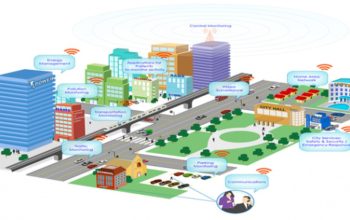With the evolution and advancement of modern technology, the cyber-attacks and threats have also progressed; lurking behind in the shadows of weak security of the company’s infrastructure, the attackers are always looking for the minutest gap in the system to slip through into the network. In this day and age, cyberattacks are considered to be one of the greatest security threats to companies, not just in terms of financial loss but also because the reputation and trust in the company is at stake, especially if the data breaches compromise key user data.
To cater to these threats and risks, an effective, sustainable, and robust strategy is necessitated, and a security testing company that facilitates the implementation of this strategy becomes indispensable.
Sustainable Protection against Cybersecurity Threats
Unbreachable security against cyberattacks and malware can be achieved through a robust and sustainable security plan which extends protection against these attacks not only to organizations but also to individuals as well. A proficient security testing company ensures the development of a measurable cyber security plan which provides actionable insights to the organizations. One of the major feats of the sustainable protection plan is that it is flexible enough to allow for timely detection of a threat or a risk of a breach, while also equipping the organizations to tackle these attacks effectively.
However, the catch is that one size does not fit all and depending on the nature of the company’s requirement, the cybersecurity strategy plan has to be personalized and customized. Contingent on the infrastructure of the company, the risk landscape, the structure of security, and the capabilities of the organization for dealing with threats, the sustainable protection plan has to be tailor made.
Phases of Building a Protection Plan
There are multiple cost-efficient ways of developing a sustainable protection plan against the cyber security risks, however, given the complexity and the perplexity of addressing the problems a multidisciplinary and holistic approach is required. Based on the deductive approach, the proposed methodology for building the sustainable cyber security plan consists of;
Simulate – a simulation model used to conduct cyberattack experiments on the system helps to discover security risks and other vulnerabilities.
Analyze – assessment of the simulation results is important to derive actionable insights from the outcome. The frequency and severity of the risks are examined to prioritize and allocate the threats.
Plan – a feasibility study is conducted to assess the desired outcomes, and the findings from the previous phases are implemented to design a plan to achieve the preferred security level.
Develop – the first step of the implementation phase; the integration and synergy of all departments including human resources, development, etc. is required for desired results.
Build – the second part of the implementation process, this phase is centered on purchasing and installing elements of the security plan.
Operate – commissioning the system and putting the plan into production, the operation phase is a never-ending process that requires constant care, persistent performance evaluation, and eventually feeding the information back to the development team to bridge the possible gaps in the system.




